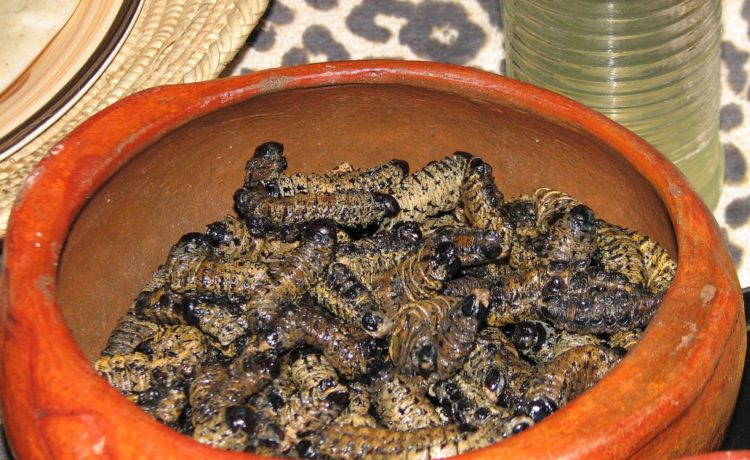Recently updated on March 27th, 2024 at 03:34 am
From expensive restaurants to local village eateries, this local delicacy is considered an absolute favourite in Zimbabwe. They are available in most supermarkets and are more costly than most other foods. While you may shudder at the thought of eating a worm or caterpillar, others would say that a well-cooked mopane worm is a treat worth trying!
Popularly known as ‘amancimbi’ in Ndebele or ‘madora’ in Shona, mopane worms have been a good source of protein for generations across Southern Africa. The worm is really a large caterpillar belonging to the Gonimbrasia belina species, more commonly known as the Emperor moth. It is named ‘mopane’ because it feeds on the leaves of mopane trees after it hatches in summer, and can only be found in southern African countries.
History
There is no documented history of the mopane worm dish in Zimbabwe. However, a stone-age pit discovered at Pomongwe Cave in Zimbabwe showed a deposit of dried mopane worms that are believed to be almost 6,000 years old.
According to Food and Agriculture Association (FAO) the mopane caterpillar is one of the best-known and most economically-important forestry resource products of the mopane woodlands in southern Zimbabwe, Botswana and northern South Africa.
Research has found that mopane worms are not only good for eating from a nutritional standpoint, but they also may be key to maintaining the ecological balance of the dry bush they inhabit.
Cooking the Mopane Worms
They are harvested during the rainy season, after which they are cleaned, sun-dried for preservation, and made available for consumption throughout the year.
The tasty worms can be eaten dry and crispy as a snack or can be drenched in sauce, or added to porridge made from maize – a staple food in Zimbabwe. Most people prefer to fry the worms with a combination of tomatoes, garlic, peanuts, chillies, and onions. Some of the recipes to cook the caterpillar can be found online.
Mopane worms can also be added to a stew, boiled to soften them up, or simply eaten raw and fresh off a tree. When they are fresh, they are less chewy and their distinctive and unique flavour is undiluted by other ingredients.











